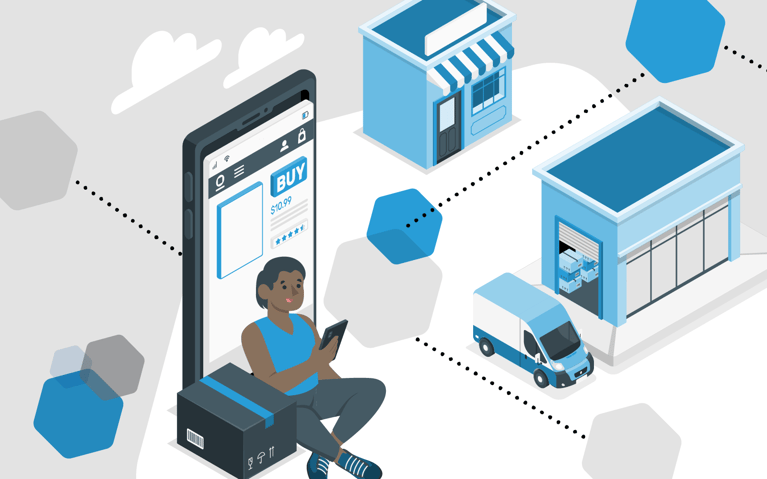When Gap, Inc., abandoned its plans to spin off Old Navy as a standalone company last year, executives acknowledged that preparing for a potential split had revealed just how much Gap’s brands benefited from operating together. From unified logistics and fulfillment to marketing synergies and supply-chain efficiencies, it turned out that getting Old Navy ready to fly solo would have cost an eye-watering $800 million.
Those back-end benefits might not be apparent when you visit a Gap store or click through to the Old Navy website to make a purchase — but that’s the point. From the customer’s perspective, Gap’s various brands — which also include Banana Republic, Athleta, Intermix, Janie and Jack, and Hill City — are distinct and powerful in their own right. But behind the scenes, Gap is able to leverage efficiencies, institutional know-how, and economies of scale to manage suppliers, sell more effectively, and keep shipments flying out of its 14 high-tech distribution centers.
There’s a lesson here for ecommerce merchants, too. Just as Gap has been able to sell more effectively by developing multiple distinct brands, each targeted to a different demographic, so too ecommerce brands can use multiple online storefronts to extend their reach or better-serve specific segments of their customer base. To achieve that, it’s necessary to deliver consistent excellence across every touchpoint, and ensure both back-end operational efficiency and a strong and unified brand experience. That’s exactly what Cart.com was designed to deliver — because we know that when brands successfully master the art of multi-storefront selling, the sky’s the limit.
The single storefront trap
Thanks to the rise of ecommerce platforms such as Shopify, and marketplaces such as Amazon and Walmart, it’s never been simpler to get started in the world of digital commerce. Want to sell on your own website? You only need a few bucks to register a URL, build out a homepage, and plug in the ecommerce platform of your choice. Prefer to sell on marketplaces? Amazon and other marketplace providers offer turn-key solutions that make it almost fool-proof to get started.
As you start selling, you could be forgiven for thinking that ecommerce is easy. But the reality is that while it’s easy to get started, it’s much harder to turn a successful small-scale merchant into an established national or international ecommerce brand. As you try to scale up, you’ll soon find that you’re having to juggle countless functions, many of which can’t be handled by your ecommerce platform and will require you to work with third-party agencies, consultants, or logistics providers.
That’s hard enough when you’re managing sales across a single storefront. But as your business grows, you’ll soon realize that to serve your customers effectively, you need to reach them through multiple distribution points. Perhaps you’re selling direct to consumers, but also want a dedicated B2B channel — or perhaps you want to create dedicated stores to serve niche users of your products, or to drive sales through secondary websites as part of your marketing campaigns and promotions.
That type of multi-faceted selling requires multiple storefronts. But as the number of storefronts you’re trying to coordinate begins to proliferate, you’ll find that the challenges and demands on your time grow exponentially. Managing marketing or fulfillment for a single storefront is hard enough — but managing such functions across multiple storefronts, while trying to maintain consistency and a stable brand experience for your customers, can quickly begin to seem like an impossibility. Many brands wind up trapped in single-storefront sales models — and many others try to expand, and wind up failing as they struggle with the logistical challenges that ensue.
Out of one, many
The solution, paradoxically, is to stop trying to replicate the processes and infrastructure you used to drive success for your first storefront. If you duplicate your infrastructure across two storefronts, you’ll only wind up with twice as many headaches. In fact, you’ll have far more than twice as many headaches, because you won’t just be running two storefronts — you’ll also be trying to identify and resolve conflicts between those two storefronts, and to eliminate the confusions and crossed wires that come with coordinating third-party providers across an increasingly complex operational org-chart.
Instead, the key to successful, scalable multi-store selling with product feed management is to build out unified infrastructure that can underpin all your ecommerce activity. It’s a bit like writing computer code: if you’re creating multiple functions that need to do similar things, you don’t rewrite the same block of code over and over. Instead, you include callouts to a central code library, and summon and execute blocks of prewritten code on an as-needed basis. Multi-store selling should operate in much the same way, with centralized business functions — from inventory management, to product information and digital asset management, to marketing and sales operations, to fulfillment and logistics — that can be applied seamlessly across as many storefronts and customer touchpoints as your business needs.
At its simplest, such an approach can be achieved using an ecommerce platform capable of fusing multi-storefront operations into a single administrative hub. By serving as the connective tissue between storefronts, such a platform can ensure a consistent customer experience and enable merchants to reach and serve more customers, more easily, without the proliferation of headaches and time-sucks that traditional multi-storefront selling entails. Better yet, merchants can seek out platforms that use a true Ecommerce-as-a-Service (EcaaS) approach, giving them access to all the tools and services they need to grow their businesses in the moment that they’re needed.
Cart.com was designed from the ground up to help merchants to put their products in front of more people, and start developing the kind of multi-touchpoint customer experience that differentiates small digital sellers from truly legendary brands. With full support for international websites, separate B2B and retail operations, and umbrella brands with multiple sub-brands, our platform was designed to effortlessly deliver rich experiences across multiple storefronts, powered by a unified backend for the ultimate in efficiency and scalability.
We can’t all be the next Gap or Old Navy — but by using the Cart.com ecosystem to build out the right infrastructure, and create the tools needed to serve customers seamlessly and efficiently across multiple storefronts, we can build our brands bigger, and ensure ecommerce companies grow to achieve their full potential.





